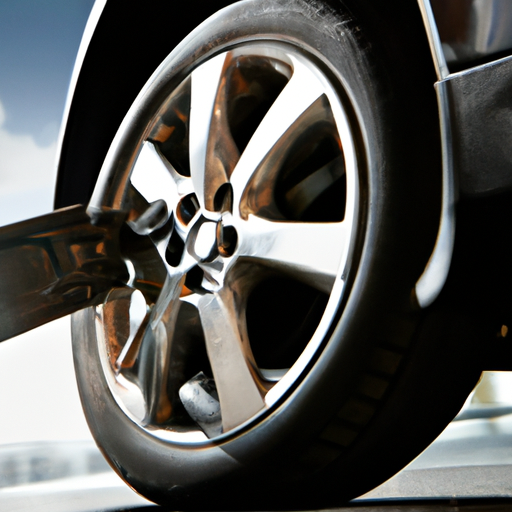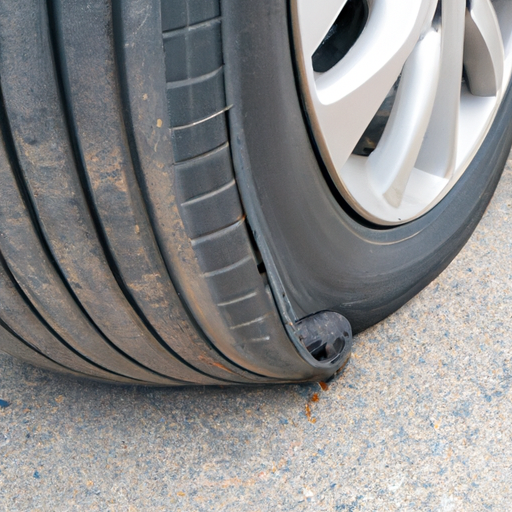Imagine a world where you no longer have to worry about a flat tire leaving you stranded on the side of the road. The emergence of run-flat tires has brought this dream closer to reality, as these innovative tires are designed to keep you moving even after a puncture. But can these run-flat tires truly replace the trusty spare tire that has saved countless drivers from being stranded? In this article, we will explore the pros and cons of run-flat tires and find out if they are a viable alternative to traditional spare tires. So buckle up and get ready to discover the future of tire safety!

Can Run-flat Tires Be Used As A Replacement For A Spare Tire?
1. Introduction
In the event of a tire puncture or blowout, having a spare tire is essential for most drivers. However, with the advent of run-flat tires, many wonder if they can serve as a suitable replacement for traditional spare tires. This article aims to explore the advantages and disadvantages of run-flat tires and assess whether they can effectively replace spare tires in emergencies.
2. What are run-flat tires?
Run-flat tires, as the name suggests, are designed to allow a vehicle to continue driving even after experiencing a puncture or blowout, typically up to a certain distance and speed. These tires are made with reinforced sidewalls or have an inner support ring that enables them to bear the weight of the vehicle, even when they have no air pressure. They are specifically engineered to prevent the immediate collapse of a tire and provide increased stability and control.
3. Advantages of run-flat tires
One of the primary advantages of run-flat tires is the ability to continue driving even after a puncture or blowout. This eliminates the need to stop and change the tire on the side of the road, saving time, effort, and potential exposure to dangerous situations. Run-flat tires also offer enhanced safety since they reduce the risk of accidents caused by sudden loss of tire pressure. Additionally, these tires provide greater peace of mind for drivers who may worry about being stranded without a spare tire.

4. Disadvantages of run-flat tires
Despite their numerous benefits, run-flat tires also have a few drawbacks to consider. Firstly, they tend to have a stiffer ride due to the reinforced sidewalls, which can result in a less comfortable driving experience. Secondly, run-flat tires are often more expensive to purchase and replace compared to standard tires. Additionally, these tires are not invincible and can sustain irreparable damage in some cases, requiring immediate replacement. Lastly, run-flat tires may not be suitable for all vehicles since they require specific rims and wheel well designs.
5. How run-flat tires work
Run-flat tires rely on their reinforced sidewalls or inner support rings to bear the weight of the vehicle in the event of a puncture or blowout. When a tire loses air pressure, the reinforced sidewalls or support rings ensure that enough rubber remains in contact with the road to maintain control and stability. This enables the driver to continue driving for a limited distance and at a reduced speed to reach a safe location or repair facility. It is important to note that run-flat tires should not be driven on for an extended period or at high speeds, as doing so can cause irreversible damage.

6. How a spare tire functions
A spare tire, commonly known as a “donut” or a “space-saver” tire, is designed to be a temporary replacement in case of a tire emergency. These tires are typically smaller and thinner than regular tires and are meant to be used for short distances and at reduced speeds. Spare tires rely on the vehicle’s suspension and wheel design to support the vehicle’s weight, and they are usually not intended for long-term or high-speed driving.
7. Can run-flat tires replace spare tires?
While run-flat tires offer the advantage of continued driving after a puncture, they may not necessarily be a complete replacement for a spare tire. This is primarily because run-flat tires have limitations in terms of distance and speed, depending on the manufacturer and model. In most cases, run-flat tires can only be driven for a limited distance, typically around 50 miles, and at reduced speeds of 50 mph or less. This means that if a tire is severely damaged or if the driver exceeds the recommended distance or speed limits, a spare tire would still be necessary.

8. Factors to consider when using run-flat tires as a spare tire replacement
If you are considering using run-flat tires as a spare tire replacement, there are a few factors to keep in mind. Firstly, it is crucial to familiarize yourself with the specific recommendations and limitations provided by the tire manufacturer. This information will indicate the maximum distance and speed at which the tire can be driven after a puncture. Additionally, it is advisable to have a tire pressure monitoring system (TPMS) installed in your vehicle to promptly detect any tire issues and prevent further damage. Lastly, considering the potential higher cost of run-flat tires, it is essential to weigh the benefits and drawbacks against your specific driving needs and budget.
11. Conclusion
While run-flat tires offer numerous advantages, such as the ability to drive after a puncture and increased safety, they may not completely replace spare tires in all situations. The limited distance and speed restrictions of run-flat tires, as well as their potential for irreparable damage, suggest that having a spare tire as a backup remains a wise choice for many drivers. When deciding whether to use run-flat tires or rely solely on a spare tire, it is crucial to consider factors such as tire manufacturer recommendations, vehicle compatibility, cost, and personal preferences. Ultimately, the choice between run-flat tires and spare tires depends on individual circumstances and priorities.


